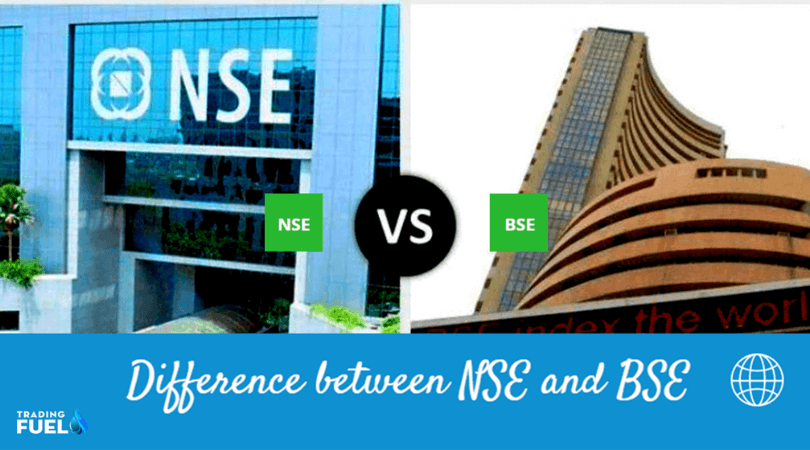BSE and NSE are organised marketplace where investors and traders transact in shares and securities. We all have come across the word Sensex in the stock market. Sensex is the stock market index for Bombay Stock Exchange i.e. BSE. Similarly, Nifty is the stock market index of National Stock Exchange i.e. NSE. In this article, we shall list out the points that differentiate BSE and NSE with each other.
BSE vs. NSE
The key differences between Bombay Stock Exchange and National Stock Exchange are as follows:
- BSE was established in the year 1875. On the other hand, NSE was set up in the year 1992.
- BSE is one of the oldest stock exchange in India. While NSE is the largest stock exchange in India.
- The daily turnover and trades are much higher in NSE in comparison to BSE.
- NSE has a market capitalization of more than $1.65 trillion. While market capitalization of BSE is $1.7 trillion.
- More than 1,700 companies are present on NSE. Meanwhile, BSE has over 5,500 companies on it.
- NSE is present in all the cities of India. However, BSE is present only in around 400 cities of the country.
- Sensex consists of 30 companies. On the other hand, Nifty comprises of 50 stocks from 22 sectors of the economy.
# NSE Website : https://www.nseindia.com/
# BSE Website : https://www.bseindia.com/
The above are the few points that differentiate NSE and BSE.
In this segment, we shall learn about the term Nifty 50.
What is Nifty 50?
Nifty 50 is a stock index that comprises of 50 stocks from 12 sectors of the economy. This is essential for bench marking of fund portfolios, index funds and index based funds. The Nifty 50 index helps to measure the overall scenario of the equity market. The group of stocks that form part of the index represents the specific sector or specific segment.
Now you know the meaning of Nifty 50, let us now learn about BSE 30.
What is BSE 30?
BSE 30 comprises of 30 financially sound and well-established companies. These companies represent the different sectors of the economy. Each company has different weight on the exchange. On the basis of the performance of different stocks the index rises or falls.
Now an important point that must be known to an investor or trader is where they should trade. To put it another way, let us learn where most of the traders and investors trade in the stock exchange.
Where do Investors and Traders Transact?
While selecting where to invest, it depends on the companies where one is looking to invest. Some companies may be listed on the BSE and not on NSE. Therefore, there is no option for such companies. However, if the companies are listed on both the exchanges, it totally depends on the choice of the investor. However, looking at the logical choice, many traders opt for trading and investing in shares on the NSE. The reason is high liquidity. The intraday traders opt for NSE as they find it easy to buy or sell any stock as the volume is high.
Since BSE and NSE are an integral part of the Indian stock exchange, let us see the objectives of BSE and NSE.
Objective of BSE and NSE
The main objective of BSE and NSE is to facilitate trading service to the investors across the nation. The emphasis of both the exchanges is to reach the investors through a good telecommunication network. The stock exchanges not only serve in shares but also other securities like mutual funds, futures and options, debt market, etc. In fact, with the incredible reach of a telecommunication network, the investors can indulge in intraday trading too.
About Us :
Trading Fuel is a pioneer in providing stock market education to the investors. With our expertise, the investors and traders can learn to understand the technical charts of the stocks. On the basis of the charts, the investors can take the right position in the stock market. Therefore, with the right knowledge and technical information the investors can become successful intraday traders. You can reach us via phone or email for any information or query. We will be glad to serve you.

